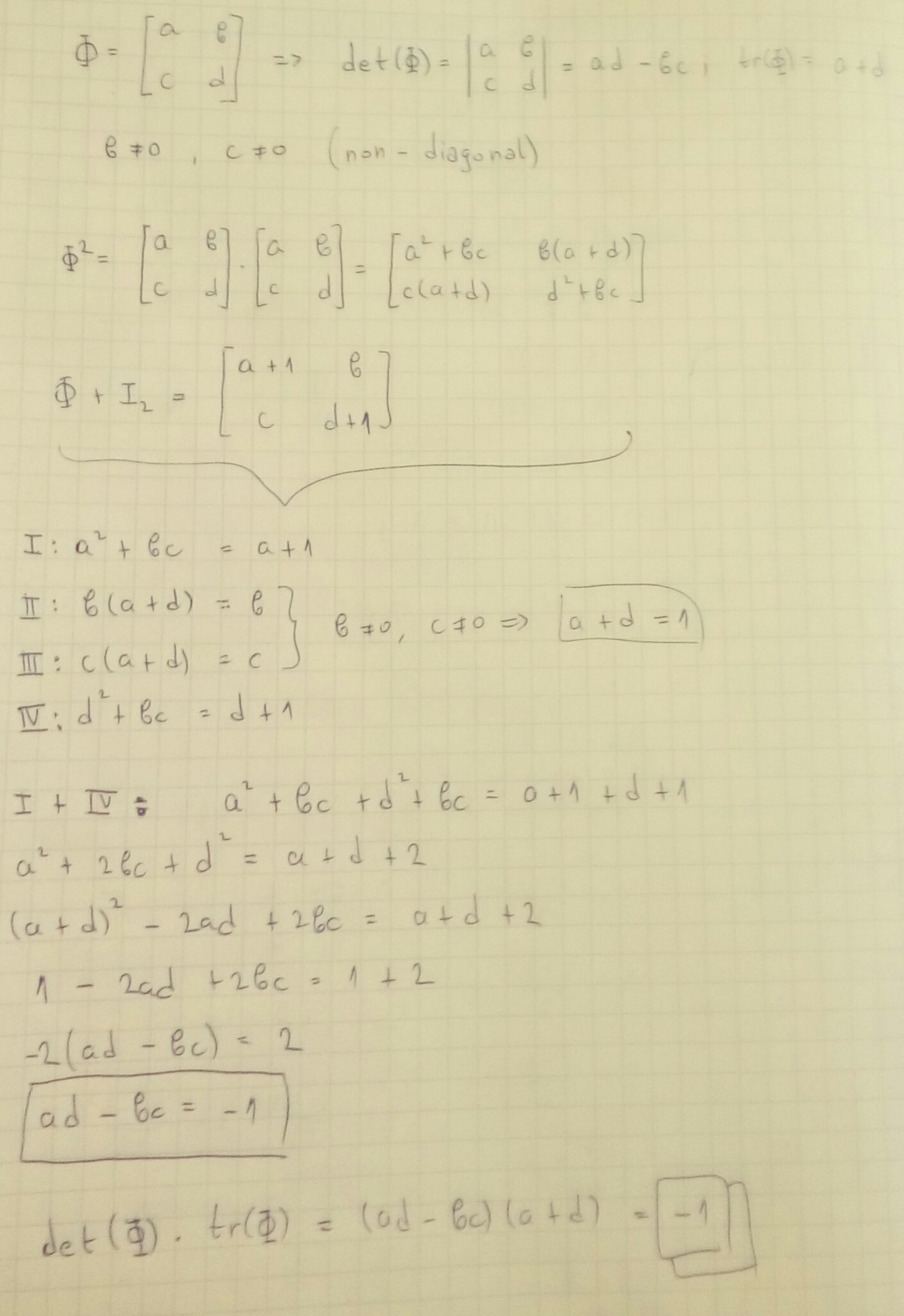Golden Matrix
Two quantities a and b are said to be in the golden ratio ϕ if a a + b = b a = ϕ , and we can easily verify that ϕ 2 = 1 + ϕ .
Let's call any 2 × 2 non-diagonal real matrix Φ a golden matrix if the following are satisfied:
-
Φ 2 = I 2 + Φ is satisfied, and
-
Φ is not a multiple of an identity matrix.
What is det ( Φ ) ⋅ t r ( Φ ) ?
Notes:
-
I 2 = [ 1 0 0 1 ] is the identity matrix of order 2 .
-
A diagonal 2 × 2 matrix M is in the form M = λ I 2 , λ ∈ R .
The answer is -1.
This section requires Javascript.
You are seeing this because something didn't load right. We suggest you, (a) try
refreshing the page, (b) enabling javascript if it is disabled on your browser and,
finally, (c)
loading the
non-javascript version of this page
. We're sorry about the hassle.
3 solutions
Since Φ 2 − Φ − I = 0 , the minimum polynomial of Φ divides t 2 − t − 1 . Since Φ is not a multiple of the identity, its minimum polynomial is not linear, and hence the minimum polynomial of Φ is t 2 − t − 1 . Thus Φ has two distinct eivenvalues, and hence is diagonalisable, so we can write Φ = S ( α + 0 0 α − ) S − 1 for some nonsingular matrix S , where α ± = 2 1 ( 1 ± 5 ) are the roots of t 2 − t − 1 = 0 (note that α + = ϕ ). Thus T r Φ = α + + α − = 1 d e t Φ = α + α − = − 1 making the answer 1 × − 1 = − 1 .
This can be solved easily with Cayley Hamilton Theorem. Since Φ satisfies the equation x 2 − x − I 2 = 0 We see that the characteristic equation of the 2 ∗ 2 Matrix Φ (The fact that it is 2*2 matrix can be easily noticed from the fact that the equation has an I 2 in it) is x 2 − x − 1 = 0
Now it can be easily proven for a Characteristic equation a x 2 + b x + c = 0 of any 2 ∗ 2 matrix A ,it is true that d e t ( A ) = a c while t r ( A ) = a − b
Hence the answer follows.
Nice solution!!!
@Aaghaz Mahajan Thanks...
